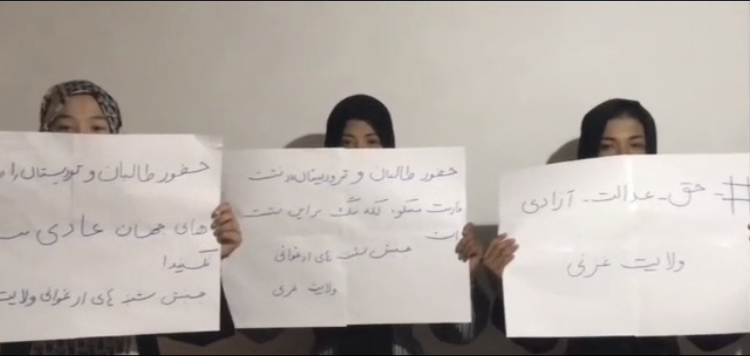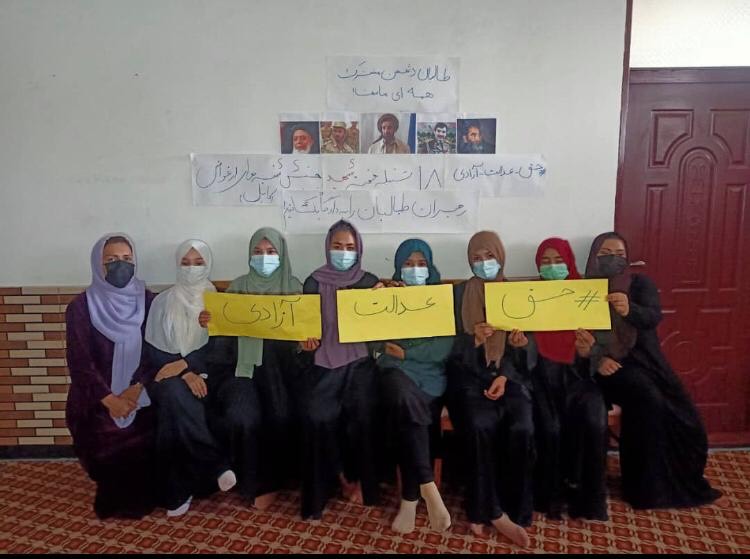A perspective on the reports of womans suicide figures in Afghanistan reveals a deeply concerning situation
-
by
admin
A perspective on the reports of female suicide figures in Afghanistan reveals a deeply concerning situation. While the exact number of suicides among women is difficult to ascertain due to underreporting and suppression of information by the Taliban, the available data and accounts from local NGOs paint a distressing picture. Maryam Marof Arwin, the head of Afghanistan Women and Children Strengthen Welfare Organisation and Purple Saturdays movement In an interview on 01.08.2023 with the Turkish news channel named MIDDLE EAST MONITOR https://www.middleeastmonitor.com/20230801-afghanistan-activists-sound-alarm-over-surge-in-suicide-among-women/has stated that her organization receives reports of at least nine to eleven suicides by women every month, with many of them being young girls. However, she believes that the actual number could be much higher, possibly in the hundreds. The underreporting is attributed to families’ reluctance to report and pressure from the Taliban, who try to suppress such reports and prevent media coverage. The deteriorating living standards in Afghanistan, particularly for women, are cited as the main reason for the spike in suicides. The ban on education and employment imposed by the Taliban has led to widespread depression and exacerbated the already dire economic conditions faced by families living in poverty. Forced marriages, domestic violence, and the lack of social opportunities further contribute to the despair and hopelessness experienced by Afghan women. It is crucial to address this mental health crisis and improve the living conditions for women in Afghanistan. Efforts should focus on providing access to education, employment, and social support systems. Additionally, raising awareness and challenging the stigma surrounding mental health issues can help create a supportive environment for those at risk. International support and advocacy are essential to bring attention to this urgent issue and ensure the well-being and rights of Afghan women.
Meanwhile, on August 28, 2023, a report on this situation was published by The Guardian News & Media ( Despair is settling in’: female suicides on rise in Taliban’s Afghanistan )https://www.theguardian.com/world/2023/aug/28/despair-is-settling-in-female-suicides-on-rise-in-talibans-afghanistanFirst, her dreams of becoming a doctor were dashed by the Taliban’s ban on education. Then her family set up a forced marriage to her cousin, a heroin addict. Latifa* felt her future had been snatched away.“I had two options: to marry an addict and live a life of misery or take my own life,” said the 18-year-old in a phone interview from her home in central Ghor province. “I chose the latter.”It was not an isolated act of desperation. Since the Taliban took control of Afghanistan in the summer of 2021, there has been a disturbing surge in the number of women taking their own lives or attempting to do so, data collected from public hospitals and mental health clinics across a third of Afghanistan’s provinces shows.Taliban authorities have not published data on suicides and have barred health workers from sharing up-to-date statistics in multiple provinces, medics say. Health workers agreed to privately share figures for the year from August 2021 to August 2022 to highlight an urgent public health crisis. The data suggests Afghanistan has become one of very few countries worldwide where more women than men die by suicide.The figures are partial but give a snapshot across Afghanistan’s wide demographic and geographic range. They cover provinces variously dominated by all of Afghanistan’s major ethnic groups, provinces ranging from southern deserts to northern mountains, and largely rural areas and others around major cities.UN officials and human rights activists have raised the alarm about the sharp increase in the number of women attempting to take their own lives. They have explicitly linked it to Taliban restrictions on every aspect of women’s existence, from a ban on education above elementary level and a prohibition on most work, to a bar on entering parks, bathhouses and other public spaces.“Afghanistan is in the midst of a mental health crisis precipitated by a women’s rights crisis,” said Alison Davidian, the country representative for UN Women. “We are witnessing a moment where growing numbers of women and girls see death as preferable to living under the current circumstances.”Globally, more than twice as many men die by suicide as women, World Health Organization (WHO) data shows. In Afghanistan, until 2019, the last year for which official figures are available, more men than women took their own lives.The Taliban declined repeated requests for comment on suicide rates or on the data collected for this investigation.The figures from healthcare providers show that out of 11 provinces surveyed, in only one did men account for the majority of suicide deaths and attempts.That province was Nimruz, the main jumping-off point for dangerous attempts to cross illegally into Iran, which are made largely by men. Those who fail in their attempt to get over the border sometimes take their own lives there.Everywhere else, women and girls made up a majority of those who died from suicide or were treated after trying to kill themselves, with the youngest recorded victims in their early teens. Overall, females made up more than three-quarters of recorded suicide deaths and treated survivors.Those bleak figures are likely to underestimate the depths of women’s desperation. Suicide is considered shameful and often covered up in Afghanistan. Some women who attempt suicide will not be taken for treatment and some who die may be buried without a record that they took their own lives.
Roya*, 31, was found dead in her house in the city of Herat in May 2022 after years in an abusive marriage. Her younger brother, Mohammad*, said his sister had often told their parents about her husband’s attacks but they urged her not to leave him.
“Every time, my parents would persuade her to keep her family together,” Mohammad said. “One morning, we were informed that Roya had [taken her own life]. We never thought it would get this far.”The family told people she had died of an illness, because they consider suicide unIslamic and shameful.Shaharzad Akbar, a former chair of the Afghanistan Independent Human Rights Commission – an organisation targeted by the Taliban insurgency and now operating in exile – said social stigma meant such secrecy was common.
“The rare instance when [relatives] willingly admit to suicide is when they don’t want any member of the family to be accused of murder,” said Akbar, who is now executive director of Rawadari, a new Afghan human rights organisation.
Lost hope
Afghanistan’s history of conflict and poverty had fuelled a mental health crisis long before August 2021. A survey published in the journal BMC Psychiatry two months before the Taliban takeover found nearly half the population suffered from psychological distress.But the loss of freedom and hope, and an increase in forced and underage marriages and domestic abuse, has made women even more vulnerable over the last two years.About 90% of mental health admissions at the provincial hospital in western Herat were women “breaking down under the weight of the new restrictions”, one medic there said.Nine in 10 women in Afghanistan are subjected to some form of domestic violence, according to the UN. Efforts to tackle the issue under the last government, from legislation to shelters, were imperfect but offered women some hope. Those efforts have now been dismantled by the Taliban.“The mechanism to respond to domestic violence is totally eradicated; women have no choice but to bear the violence or kill themselves,” said Akbar.Warnings about female suicides are only intensifying as the Taliban tighten controls on every aspect of women’s lives, most recently banning beauty salons.When Latifa woke up in a hospital bed surrounded by family and doctors, she was told that her cousin had disappeared after learning of her suicide attempt. She worries that he might return and says if he does she will try to kill herself again.
“If he comes back and my family tries to force me [into marriage] again, I will … make sure I don’t survive,” she said.Medics in Herat province, which recorded the highest numbers of female suicides and attempted suicides, described a system overwhelmed, with only 25 mental health beds for a population of millions.
Herat has recorded high levels of gender violence and female suicide for many years. Even so, medical need has soared since the Taliban took power. “Patients do not get the hospitalisation time and counselling they need,” one health worker said. “Many times, we put two patients in one bed.”In May, the UN special rapporteur on the situation of human rights in Afghanistan, Richard Bennett, and the chair of the UN working group on discrimination against women and girls, Dorothy Estrada-Tanck, said they were “alarmed about widespread mental health issues and accounts of escalating suicides among women and girls”.Some see suicide as the only remaining form of defiance possible in a country where authorities are seeking to remove women from public life entirely.“They don’t have much room for expressing their protests and disagreements,” said Julie Billaud, an anthropology professor at the Geneva Graduate Institute and the author of Kabul Carnival, a book about gender politics in postwar Afghanistan. “The despair is settling in. Perhaps that [suicide] is the last attempt by those who have left no power to say something and be heard.”




